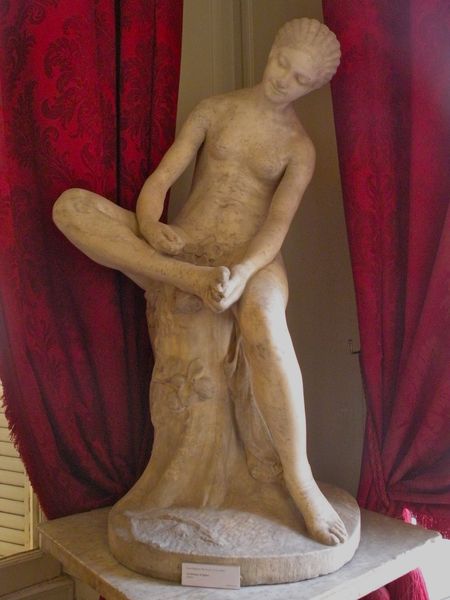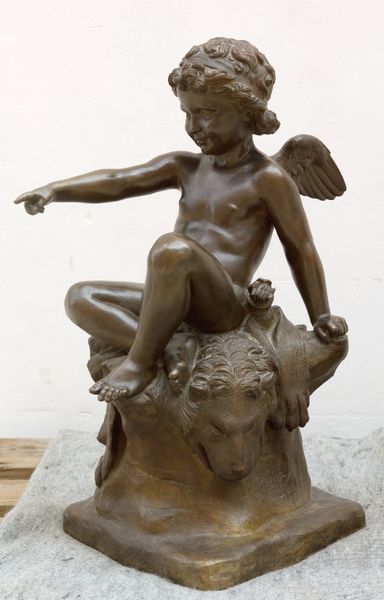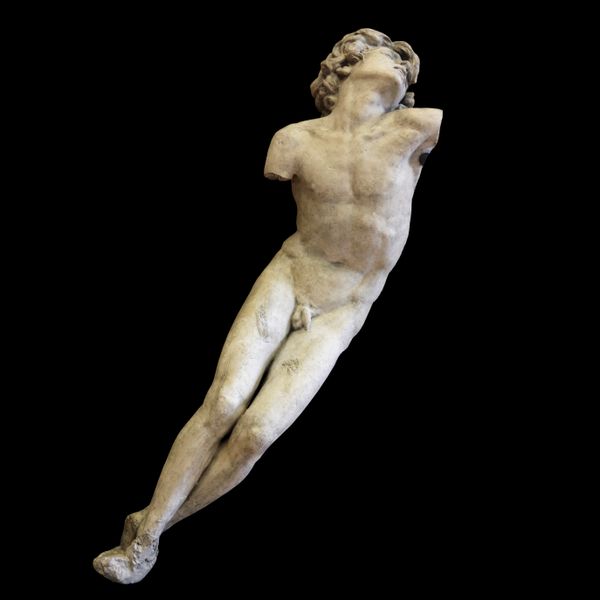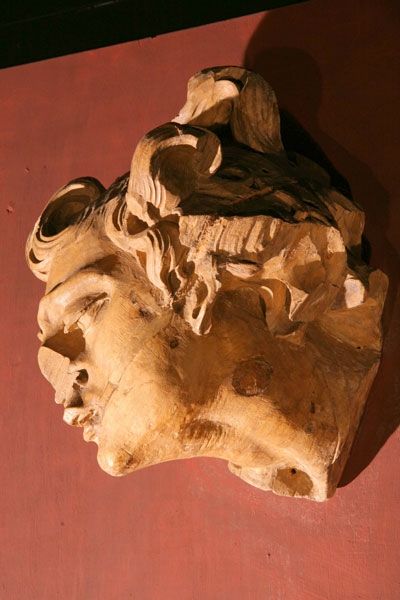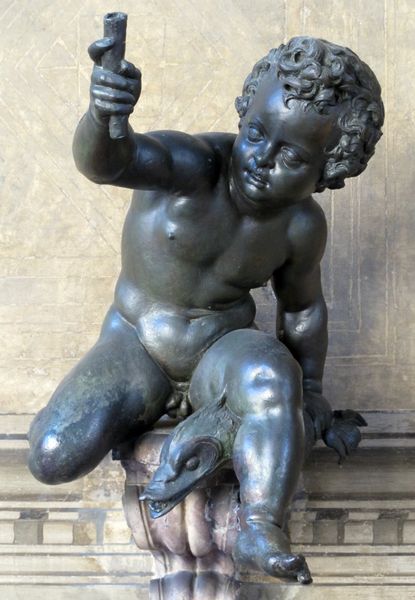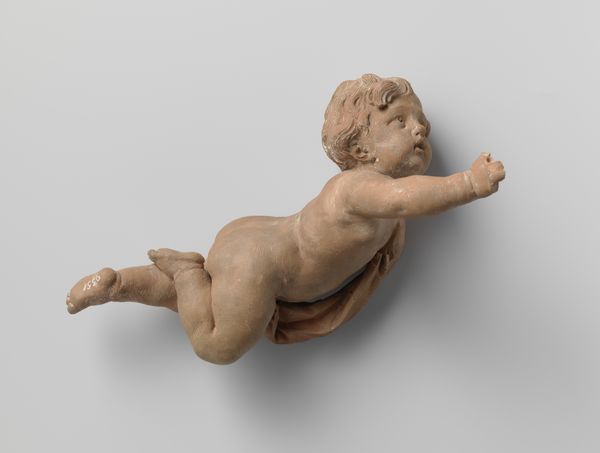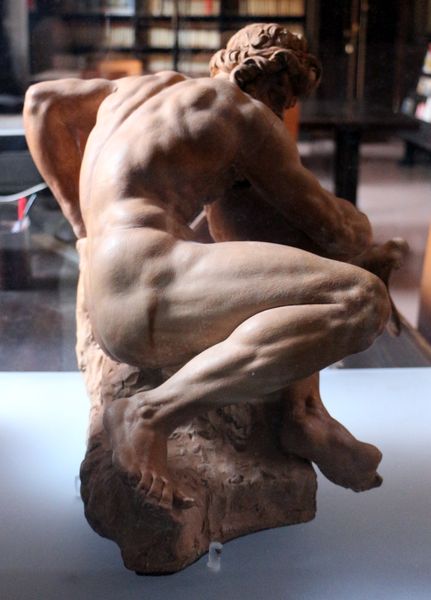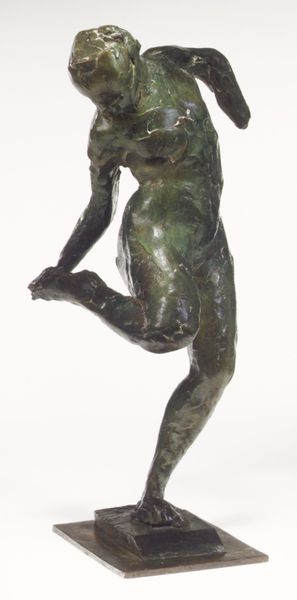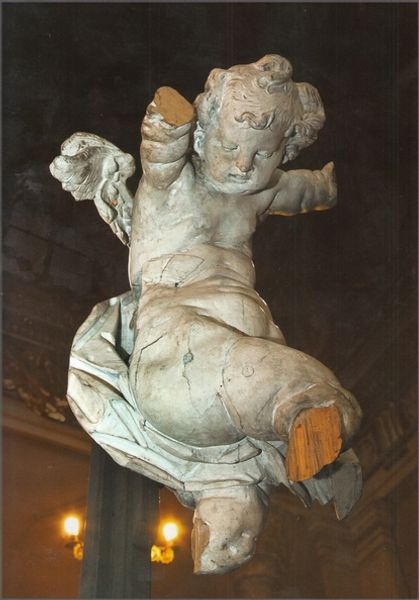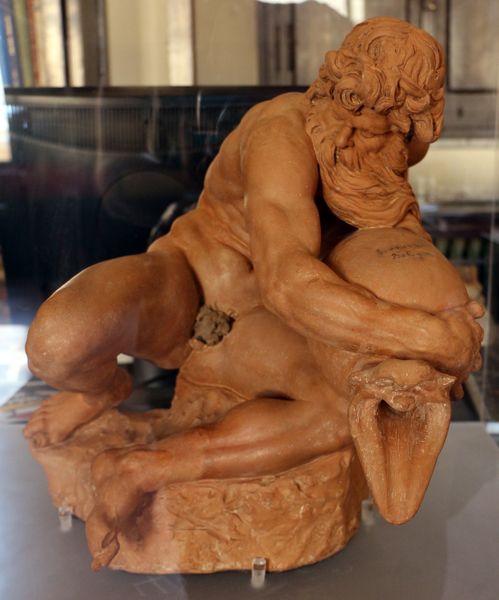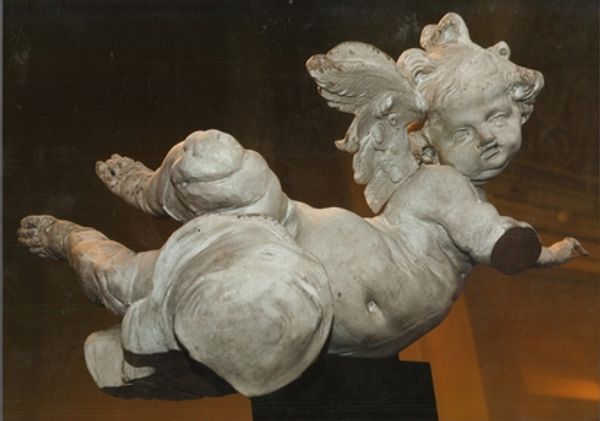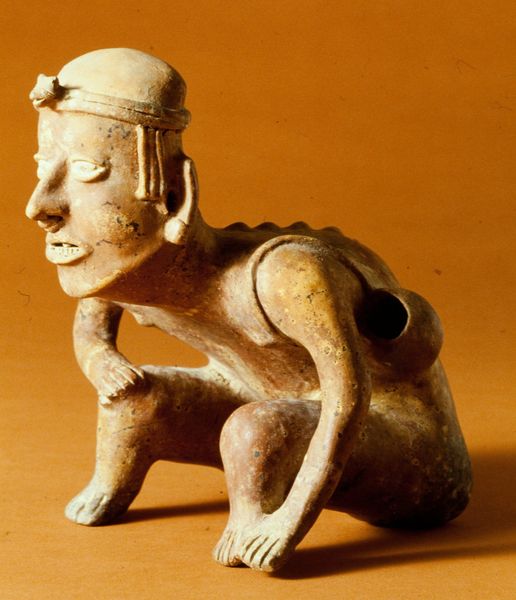
carving, sculpture, wood
#
gouache
#
carving
#
figuration
#
sculpture
#
wood
#
rococo
Copyright: Public domain
Editor: Here we have Johann Georg Pinzel’s "Putti," a wood sculpture created around 1755. It has such a dynamic presence despite its stillness. What do you see in this piece? Curator: It’s important to consider Pinzel’s context: a period marked by social hierarchies and religious fervor. Carvings like this weren’t just decorative; they were powerful visual tools of the Counter-Reformation, meant to inspire piety and awe. That writhing form, typical of the Rococo, attempts to embody religious ecstasy. Where do you think we see that expressed in the sculpture itself? Editor: I suppose its upward reaching arms suggest a desire to connect to the divine, despite being physically tethered to something— the wall, maybe, but symbolically also worldly concerns. But does the focus on putti somehow sanitize the intense messages of the time? Curator: Perhaps. It’s true the putti are aesthetically pleasing, softening the more severe messages of the Church. Yet their very presence is also political. By using the idealized form of the child, Pinzel engages notions of purity and innocence central to religious doctrine, but also patriarchal social expectations. What does the material— the roughly hewn wood—suggest to you? Editor: The rough wood feels almost defiant against the Rococo's tendency towards refinement. It’s like a raw, earthy rebellion bubbling beneath the surface of something sweet. It makes the piece feel almost subversive in its material honesty. Curator: Precisely. The raw texture pushes against idealized forms and encourages a deeper exploration of its cultural context. Editor: That tension between raw and refined gives it such a powerful edge. I won't look at Rococo the same way again.
Comments
No comments
Be the first to comment and join the conversation on the ultimate creative platform.
